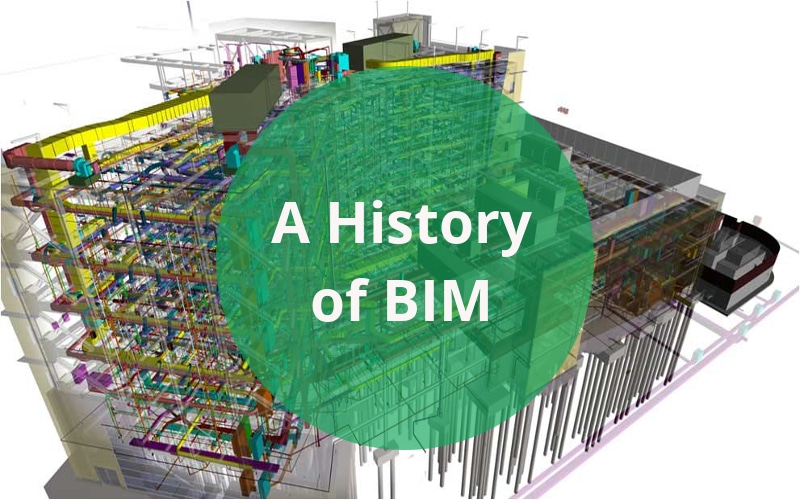Lately, building information modelling (BIM) has been making waves in the construction industry. For the last two years, everyone’s gushing about BIM in building and construction expos. It has been the buzzword and may seem new to many but in actuality, the ideas and technologies behind BIM have been evolving for more than fifty years (Silva, 2011).
The concept of BIM is not attributed to one person but is a rich history of innovation from the United States, Central and Northern Europe and all the way to Japan. It’s also interesting to note that a portion of BIM’s history is entwined with the Cold War. All these engaging stories come down to the race to create the perfect collaborative solution to disrupt the 2D CAD work flows (Bergin, 2011).
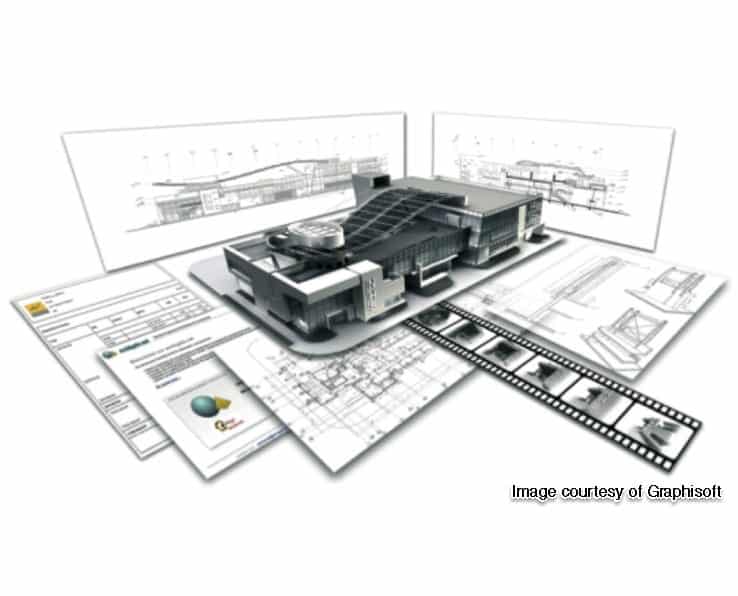
What is BIM again?
We thoroughly discussed what Building Information Modelling (BIM) is in a previous post but for clarity of this article, the ideal BIM software is capable of representing the physical and intrinsic properties of a building as an object-oriented model tied to a database (Bergin, 2011). Most modern BIM can render engines, optimize feature specific taxonomy and program environment to build model components, and ambition to do more.
Modern BIM models are 3D with orthographic 2D plans that also come with section and elevation views. As an infrastructure project develops, project drawings and changes are correspondingly adjusted with each change in the model. A building information model can be designed in software that may or may not be parametric. Parametric is an algorithm-based process that allows for the expression of parameters and rules that, together, define, encode and clarify the relationship between design intent and design response (Jabi, 2013).
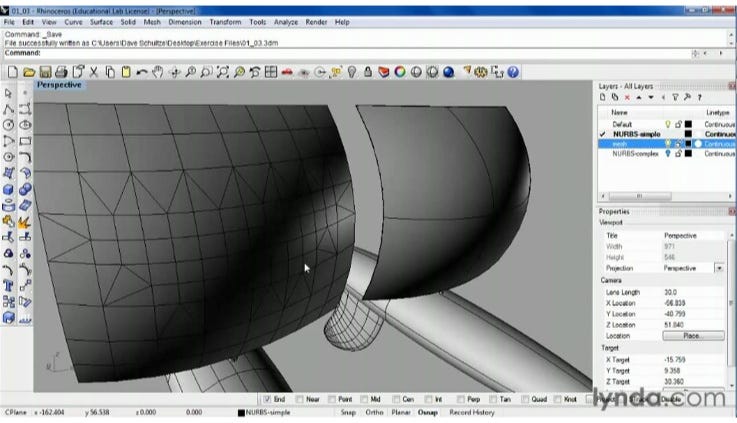
Parametric what?
Parametric modelling enables the constraint features to be created such as the height of a horizontal level, which then can be linked to the height of a specific set of walls, parametrically adjusted with each other. This creates a geometry-tied dynamic database model. This evolution gave a solution to the absence of computable information that was discussed in this article.
Parametric modelling allowed the industry to change drawings at multiple scales and across fragmented drawing sheets — hours necessary for manual redrafting steadily decreased over time. The employment of computer technology automated long-winded tasks in all disciplines, thereby greatly improving productivity. In the early days, BIM was more of a figure of speech than actual technology — computer limitations and weird user interfaces for BIM platforms ended up with 2D line drawing programs like AutoCAD and Bentley Microstation. It took quite a while to incorporate computability in design modelling.
Timeline of BIM history
1957 — Pronto, first commercial computer-aided machining (CAM) software
1963 — Sketchpad, CAD with graphical user interface
1975 — Building Description System (BDS)
1977 — Graphical Language for Interactive Design (GLIDE)
1982–2D CAD
1984 — Radar CH
1985 — Vectorworks
1986 — Really Universal Computer-Aided Production System (RUCAPS)
1987 — ArchiCAD
1988 — Pro/ENGINEER
1992 — Building Information Model as official term
1993 — Building Design Advisor
1994 — miniCAD
1995 — International Foundation Class (IFC) file format
1997 — ArchiCAD’s Teamwork
1999 — Onuma
2000 — Revit
2001 — NavisWorks
2002 — Autodesk buys Revit
2003 — Generative Components
2004 — Revit 6 update
2006 — Digital Project
2007 — Autodesk buys NavisWorks
2008 — Parametricist Manifesto
2012 — formit
Early BIM beginnings
To trace the history of BIM and BIM systems, we have to go back to the early days of computing and dig through the conceptual underpinnings. Computer-aided design and computer-aided manufacturing (then machining) developed as two separate technologies roughly at the same time going into the 60s. At the time, no one foresaw that both CAM and CAD would eventually intertwine and emerge as powerful forces in the industrial world (American Machinist, 1999).
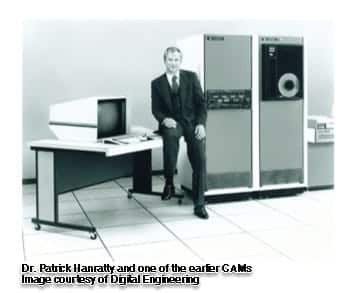
In 1957, Pronto, the first commercial software computer-aided manufacturing (CAM) was developed by Dr. Patrick J. Hanratty. It was a numerical control machining technology that later grew into computer-aided manufacturing. A short time after that, he dabbled into computer-generated graphics and in 1961 developed DAC (Design Automated by Computer) which became the first CAM/CAD system that used interactive graphics and was used for General Motors’ complex die molds. After a few failures that were basically caused by an unpopular programming language, Hanratty had this to say:
“Never generate anything closely coupled to a specific architecture. And make sure you keep things open to communicate with other systems, even your competitors.”
In 1962, Douglas C. Englebart wrote a paper entitled, “Augmenting Human Intellect”. In it, he posited the idea of the future architect, suggested object-based design, parametric manipulation, and relational database (Bergin, 2011):
“The architect next begins to enter a series of specifications and data–a six-inch slab floor, twelve-inch concrete walls eight feet high within the excavation, and so on. When he has finished, the revised scene appears on the screen. A structure is taking shape. He examines it, adjusts it… These lists grow into an evermore-detailed, interlinked structure, which represents the maturing thought behind the actual design.”
During that time, several design researchers were working on a technology equivalent to Geographic Information Systems (GIS). Among these researchers, Christopher Alexander’s work was notable as it influenced a group of early computer scientists to work on object-oriented programming. However, without a graphical interface, the conceptual frameworks could not be realized at the time.
Dream building the model
In 1963, the first computer-aided design (CAD) with a graphical user interface, “Sketchpad”, was developed at the MIT Lincoln Labs by Ivan Sutherland. Overall, it pioneered the way for human-computer interaction and was a major breakthrough in the development of computer graphics (Sutherland, 2003).
In terms of construction tech, Sketchpad gave way to solid modelling programs — computational representation of geometry was further developed which allowed the ability to display and record shape information. In the 70s and 80s, the two main methods born out of this were constructive solid geometry (CSG) and boundary representation (brep). The whole design process for this necessitated an intuitive connection to the design medium and presented the challenge of commanding the computer in a simple way.
Assembling the database
In 1975, Charles Eastman published a paper describing a prototype called Building Description System (BDS). It discussed ideas of parametric design, high quality computable 3D representations, with a “single integrated database for visual and quantitative analyses”. Eastman’s paper basically described BIM as we know it now.
Eastman designed a program that gave the user access to a sortable database — information can be retrieved categorically by attributes (including material and supplier); it also used a graphical user interface, orthographic and perspective views. The BDS was one of the first projects in BIM history to successfully create this building database; it described individual library elements which can be retrieved and added to a model (Bergin, 2011).
Eastman concluded that BDS would improve drafting and analysis efficiencies and cut the cost of design by more than fifty percent. BDS was the experiment that identified the most fundamental problems in architectural design for the next five decades. In 1977, Charles Eastman created GLIDE (Graphical Language for Interactive Design) in the CMU Lab and it exhibited most of the characteristics of the modern BIM platform.
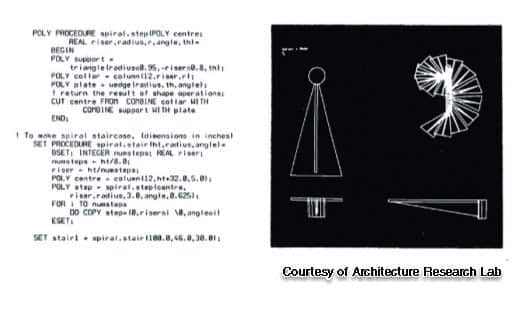
The 80s came and several systems were being developed everywhere. They quite gained popularity within the industry and some were even applied to construction projects. It was in 1986 when RUCAPS (Really Universal Computer-Aided Production System) was used to assist the renovation of Heathrow Airport’s Terminal 3. It was the first CAD program in the history of BIM to be used in prefab construction (or temporal phase construction, if you want to be technical). It is regarded as a forerunner to today’s BIM software (Eastman et al, 2008).
Towards virtual design and construction
While developments were speedily taking place in the United States and in England, in communist Hungary, one computational and programming genius was illegally smuggling Apple computers through the Iron Curtain to develop a software that would, later on, change the course of the history of both the BIM concept and the BIM market to what we know it today (Arnold, 2002). In 1982, Gábor Bojár started developing ArchiCAD; he had to pawn his wife’s jewellery to smuggle Apple computers. With similar technology as the BDS, Bojár released Graphisoft’s Radar CH in 1984 for the Apple Lisa OS.
This was later relaunched in 1987 as ArchiCAD, making ArchiCAD the first BIM software available on a personal computer (Bergin, 2011). As ArchiCAD was being implemented under the virtual building concept in 1987, just about 2000 km up north, Tekla completed its combined graphics and a relational database for their early system version of a BIM.
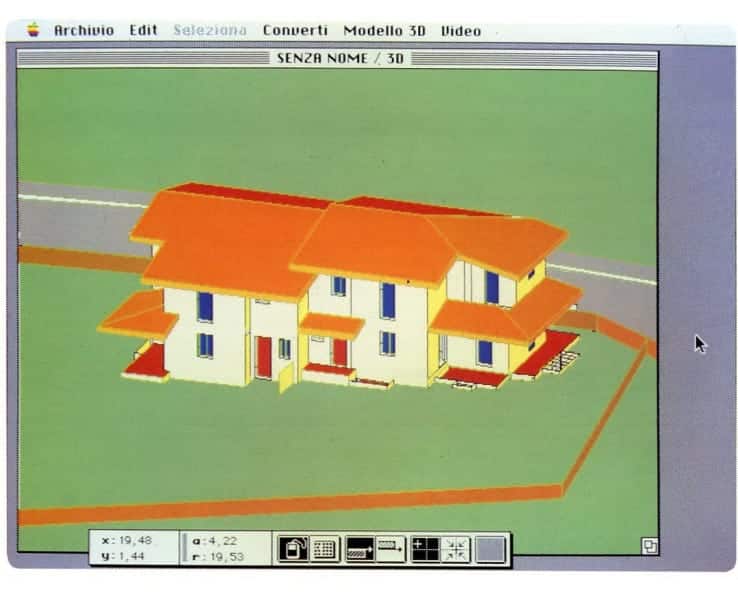
Backtrack to 1985, in the US, Diehl Graphsoft was developing Vectorworks, one of the first CAD programs, one of the first 3D modelling software programs, and the first cross-platform CAD application. Vectorworks was one of the first to introduce BIM capabilities. At the same time (1985), Parametric Technology Corporation (PTC) was founded in 1985 and they released Pro/ENGINEER in 1988, considered to be the first-ever marketed parametric modelling design software in BIM history. Splitting from PTC, Irwin Jungreis and Leonid Raiz went to form their own software company, Charles River Software.
The duo wanted to develop an architectural version of Pro/ENGINEER that could handle more complex projects than ArchiCAD. By 2000, they had a program called Revit, a made-up word that’s supposed to connote revision and speed (one article comment said it was a portmanteau of “Revise it!”). Revit revolutionized BIM by using a parametric change engine made possible through object-oriented programming, and by creating a platform that allowed time attributes to be added.
Some important things to note in the history of BIM would be the development of the Building Design Advisor at Lawrence Berkeley National Lab in 1993. It was software that performed simulations and suggested solutions based on a model. In Australia, Mapsoft was formed in 1994 and was designing the affordable survey CAD software. This paved the way for miniCAD, the first survey CAD software to run on a handheld computer — the DOS-based HP100LX. It’s still in use today for Windows, Palms, and other old school pocket PCs.
Evolution of BIM terms and definitions
Robert Aish first documented the use of the term “Building Modelling” in a published paper in 1986. In this paper, he argued for what we now know as BIM and the technology to implement it. A few years after that, the first documented use of the term “Building Information Model” appeared in a paper by G.A. Van Nederveen and F. Tolman in the December 1992 Automation in Construction.
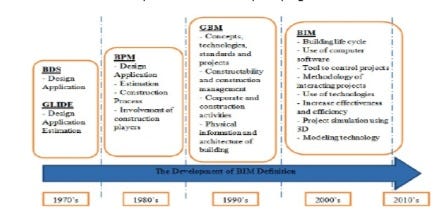
Cultivating a collaborative culture
Modern architecture, engineering, and construction practices have been moving towards a trend of collaboration. In the past decade, architectural files are being integrated with those of the engineers’ systems. This culture of collaboration has been impacting the larger industry — it’s been slowly moving away bid contracts towards an integrated project delivery system where everyone works on a mutually accessible set of BIM models.
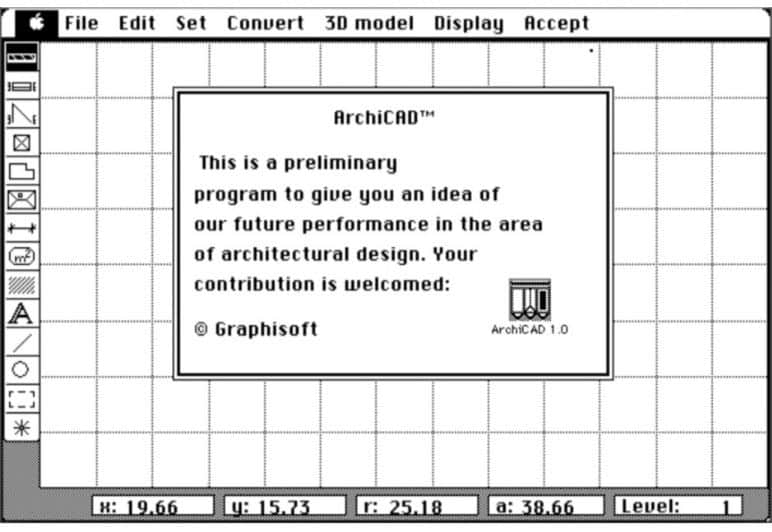
In 1995, the International Foundation Class (IFC) file format was developed to allow data to flow across platforms — basically making a file compatible with different BIM programs. In 1997, ArchiCAD released its first file exchange based Teamwork solution. This revolutionized team collaborations and allowed more architects to work on a building model simultaneously.
Updates on Teamwork, later on, allowed remote access to the same project over the Internet and allowed project collaboration and coordination on a larger scale. In 1999 in Japan, Onuma allowed virtual teams to work on BIM through the Internet and created a database-driven BIM planning system that paved the way for future seamless cross-platform integration of BIM software and parametric technologies.
In 2001, NavisWorks developed and marketed JetStream, a 3D design review software that offered a set of tools to 3D CAD navigation, collaboration, and coordination. JetStream basically coordinated varying file format data and allowed construction simulation and problem detection. When Revit released its update, Revit 6, in 2004, this set the stage for larger teams of architects and engineers to collaborate in one integrated model software.
As Autodesk raced to be on top of the BIM game, it acquired Revit in 2002, NavisWorks in 2007, among other “smaller” BIM systems. In late 2012, Autodesk developed formit. Formit is an application that enables the conception of a BIM model on a mobile device.
Current BIM practice
There are a few BIM players worth mentioning here. Although having small market shares, they have made huge impacts in the world of design. In 2003, Bentley Systems developed Generative Components (GC), a BIM platform that focused on parametric flexibility and sculpting geometry that supports NURBS (non-uniform rational B-spline) surfaces.
In 2006, Gehry Technologies released Digital Project, a program similar to GC. Both Digital Project and GC spawned a revolution in architectural designs. These two platforms are revolutionary, in a sense, as they can produce especially complex and provocative architectural forms, paving the way for parametricism. Patrick Schumacher coined “parametricism” and the movement of building parametric architectural structures in 2008. He pointed out in the Parametricist Manifesto the importance of mastering the modern BIM platforms (DP and GC) in competing in the modern architecture scene. He is quoted to say:
“The current stage of advancement within parametricism relates as much to the continuous advancement of the attendant computational design technologies as it is due to the designer’s realization of the unique formal and organizational opportunities that are afforded. Parametricism can only exist via sophisticated parametric techniques. Finally, computationally advanced design techniques like scripting (in Mel-script or Rhino-script) and parametric modeling (with tools like GC or DP) are becoming a pervasive reality. Today it is impossible to compete within the contemporary avant-garde scene without mastering these techniques.”
With all the parameticist view and the “older tradesmen” values, there is a generational drift that is being subtly created by technology integration. For example, an “entry-level” designer who knows basic commands on a software can produce more work than a highly experienced architect who is inexperienced with program interface and concepts.
Since all these are learnable skills and techniques, architectural schools and even software companies provide specific training for specific software. Being “outdated” as a worker is a myth since all these new technological integrations can be learned.
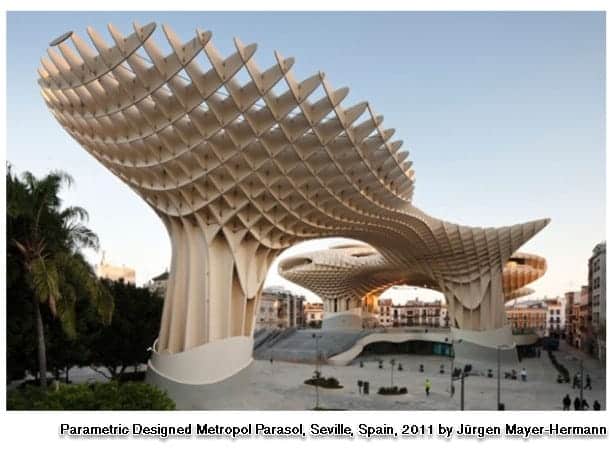
BIM in the future
As BIM celebrates at least 40 years of its general concept and technology, it seems to just be realizing its massive potential to the architecture, engineering, and construction sector. We are slowly witnessing the integration of virtual design and construction with “sustainable design practices, human-computer interaction, augmented reality, cloud computing, and generative design” (Bergin, 2011). These trends are continually and rapidly influencing the evolution of BIM. It is actually an exciting time to be alive and to witness the rise of construction tech.
This piece is part of a series covering building information modeling (BIM). Supplement this with articles discussing what BIM is and its benefits to the construction industry, the roles in a BIM project cycle, the challenges and potentials of this emerging construction technology, what are its future implications, and the common myths surrounding its use. Supplement your BIM knowledge by downloading the free ebook on increasing productivity on the construction work site. Keep feeding your knowledge of BIM and IPD model of construction management and delivery.
